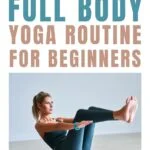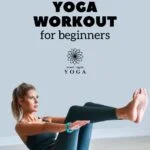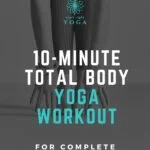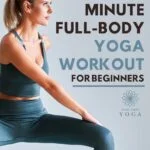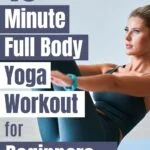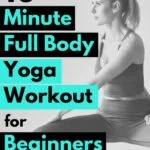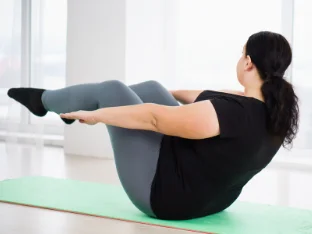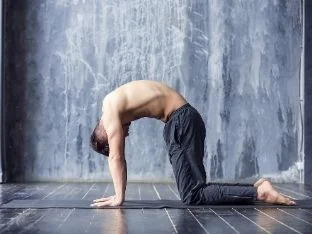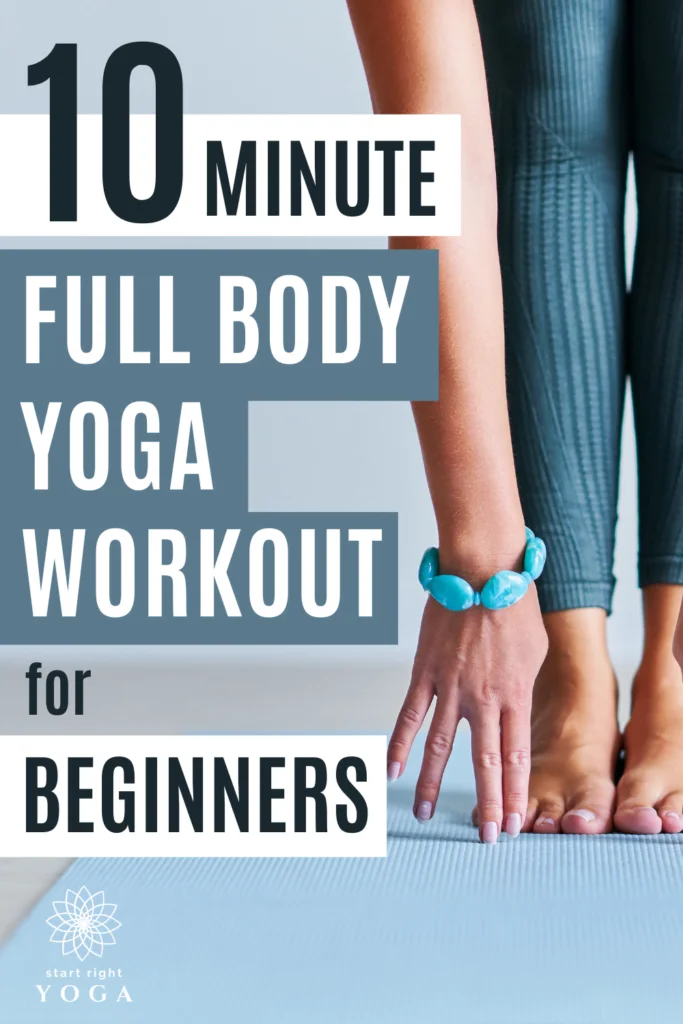
If you’re looking for a beginner’s yoga plan to get you started with yoga, then this 10-minute full body yoga workout for beginners is just for you.
Yoga can work your entire body, this quick full-body yoga workout will focus on working your flexibility, muscle strength and core as you work through a series of 9 hatha yoga poses.
No matter where you have started, or what your purpose is for doing yoga, let us guide you through our home yoga routine for beginners that you can do whenever wherever.
This yoga workout is perfect for building strong foundations, learning the poses and building your confidence.
As much as we want to do it and as much as we know we should, yoga is sometimes overlooked. But it shouldn’t be, yoga has many benefits to offer from increased flexibility, focusing your mind, de-stressing after a hard day at work, and to strengthening your core muscles.
When you start committing to the practice you will see that yoga is awesome. We put off doing yoga for years, once we started, we wished we had started sooner.
How to start doing yoga at home
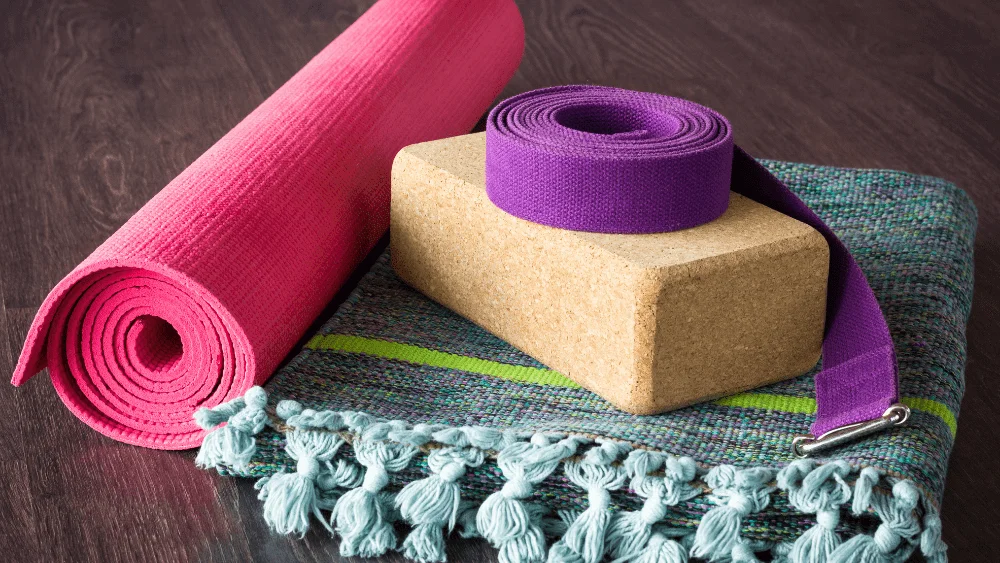
If you feel awkward going to a yoga class, then home yoga might be just what you need. To make yoga part of your everyday life you don’t need to take regular journeys to your local yoga studio, everything can be done at home.
If you are starting yoga for the first time you will love this beginner’s home yoga workout.
To do yoga from home all you really need is a small quiet space and a yoga mat. There are of course some other items that you may find useful when practicing yoga at home which include.
Yoga Wheel – a yoga wheel can be used as a prop to either enhance a pose or make it easier.
Yoga Blocks – also used as a prop to help you reach further, get into position or as a little bit of support.
Straps – straps help you to assist you to reach further into a pose.
Creating a quiet space with little distraction is key to being able to perform your yoga routines. It’s also handy to turn your phone off, leave it in another room, or if you are using it as a timer switch it to flight mode to minimize distractions.
We also like to light a candle or get an incense burning when we do our restorative yoga just to set the mood.
what is the best yoga for beginners?
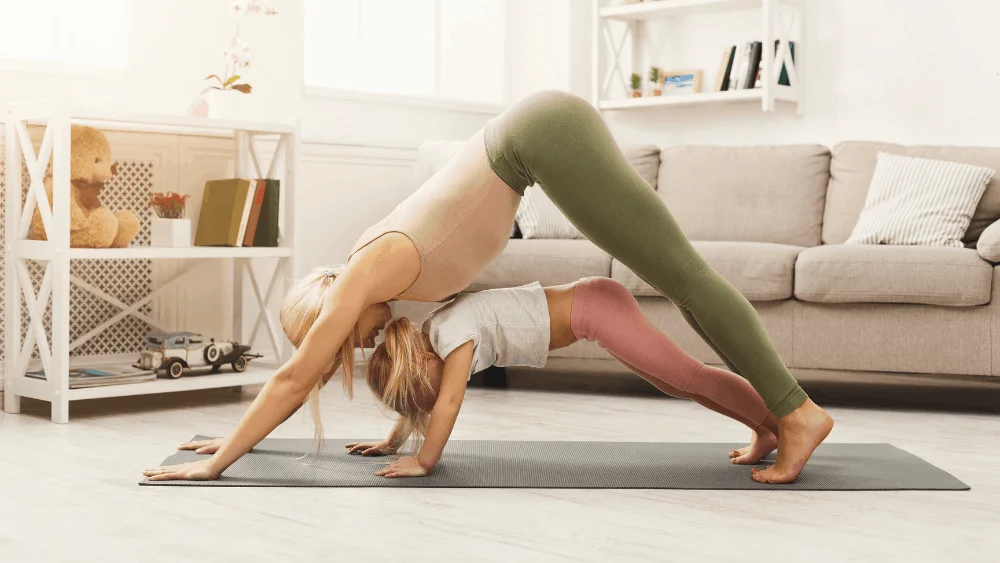
The best type of yoga for beginners tends to be slower-paced forms of yoga such as Hatha yoga or Anusara yoga which encompasses much of the poses that Hatha yoga uses and classes usually start with a chant and end with some meditation.
Restorative yoga is also very good for beginners as most of the poses are on the floor, they are gentle and slow.
When choosing a beginner’s yoga workout look for yoga routines that allow you to get into your poses and then hold them for a while before moving on.
As a beginner, you need to learn the poses and then get confident so that you can transition between poses. As you gain more confidence you can then move up to a more intense form of yoga such as vinyasa which is just a faster more energetic version of hatha yoga.
How often should a beginner do yoga?
Because yoga is quite gentle for beginners you could do yoga every day if you liked. If you did strength-based yoga then you may want to have a rest day between or do a more restorative form of yoga or stretching poses on the days between to allow your body to rest and recover.
At the end of the day, if your body feels good, you can quite happily do yoga every day.
The more you do yoga the more you will learn the poses and be able to progress your practice.
10-minute Full Body yoga workout for beginners
This 10-minute beginner yoga workout is going to be gentle and will allow you to learn some of the key poses used in yoga while working our entire body.
You will hold each pose for 1 minute as you feel the stretch, feel your muscles work. If you feel pain, ease off, and try again. Yoga should not be painful.
The poses should flow from one to the next, but it may take you some time to get used to the names and positions.
For a longer yoga workout, you could double up and do two rounds with a minute or so rest between each round.
Take your time in each pose focusing in on your breathing. Take your time, in through your nose and out through your mouth, it is all about control.
If a pose gets too hard or you get uncomfortable, return to the ground and try again until the time is up.
The poses
- Mountain Pose
- Standing Half Forward Bend Pose
- Wide-Legged Forward Bend Pose
- Downward Facing Dog Pose
- Plank Pose
- Cat-Cow Pose
- Childs Pose
- Pigeon Pose
- Corpse Pose
how to do each pose
Here is a quick guide to each pose in this quick full-body yoga workout for beginners taking you through the steps of how to do each yoga pose.
A pose that you should get familiar with is tabletop or Bharmanasana . It’s super simple and it’s a pose we regularly come back to. Tabletop pose is basically you on all fours, hands under your shoulders and knees under our hips as in the image below.
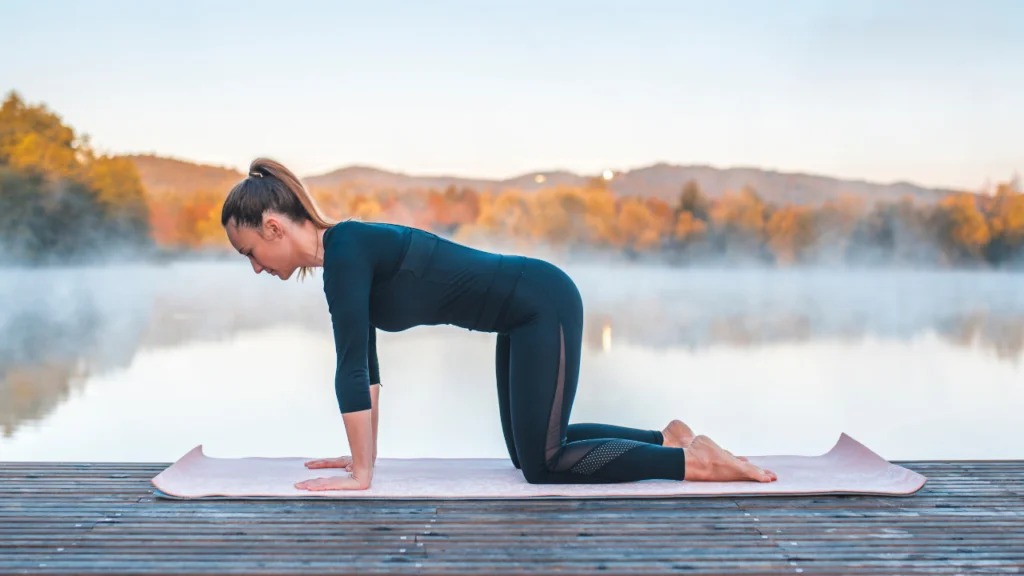
1. Mountain pose
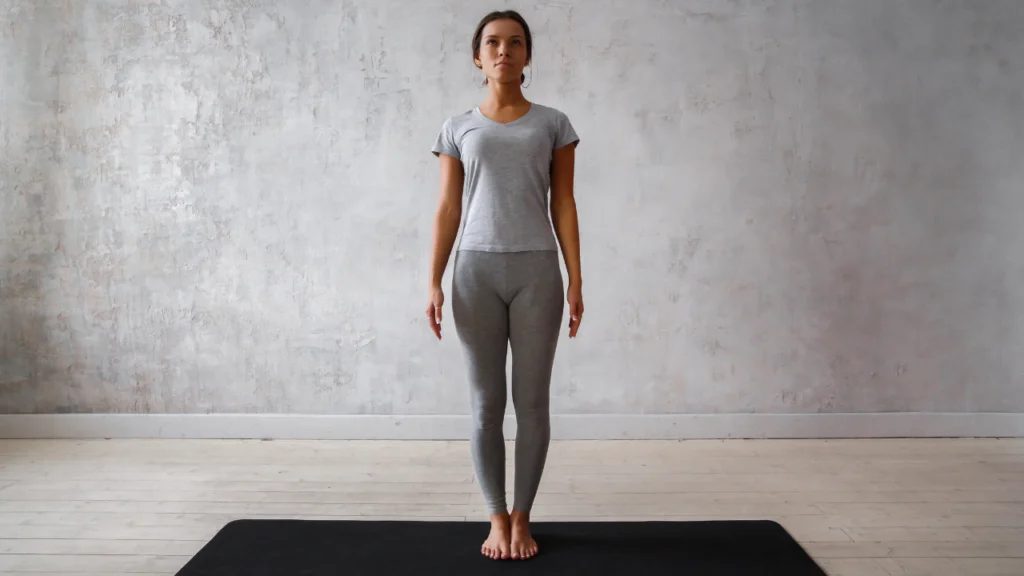
Mountain Pose or Tadasana is a very simple pose that will start you off on this beginner’s yoga workout. It teaches you to align your spine and stand properly.
Stand with your feet under your hips, head up facing forwards. Let your chest rise and pull your shoulders back and down. Place your arms by your sides. Keep your navel pulled in and gently stabilize your whole body with each breath.
Hold here for 1 minute
2. Standing half forward bend
This pose is helpful to relive head and neck pian, whilst working our hamstrings and lower back muscles.
To do Standing half forward bend stand on your mat with your feet under your hips, spine erect and hands by your side. As you inhale lift your arms up above your head.
With an exhale push your hips back and lean your body forward into the bend. Let your legs bend very slightly to support your lower back.
Hold in position for 1 minute.
3. Wide legged forward bend
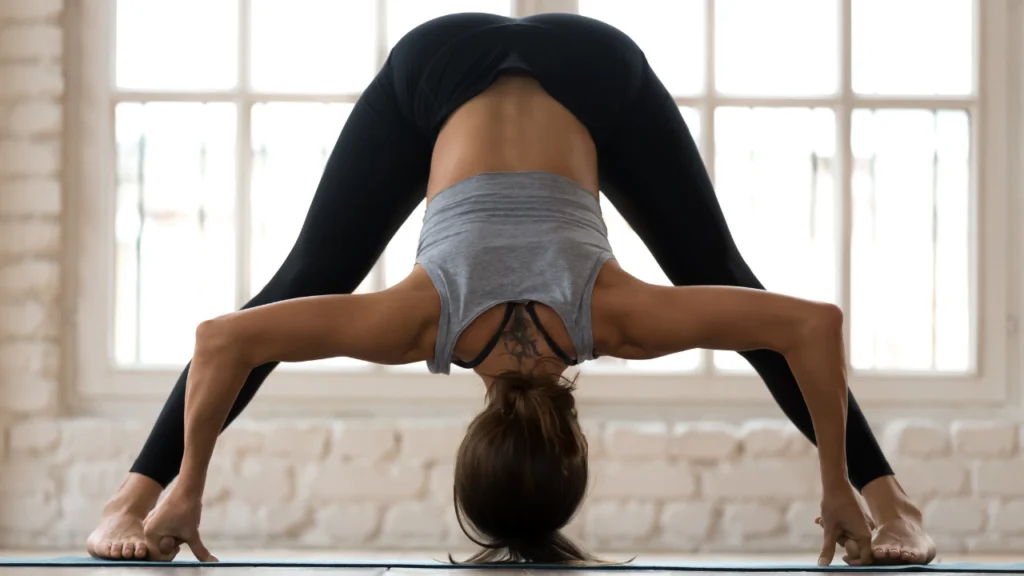
From Standing half forward bend return to standing. Spread your legs 3 feet or so apart. Exhale and lean forward towards the floor with your legs straight. Reach your hands to your feet and place your hands on the floor.
If you struggle to get down low enough in this pose use your yoga wheel or a block to rest your hands on for support.
Hold in position for 1 minute.
4. Downward facing dog
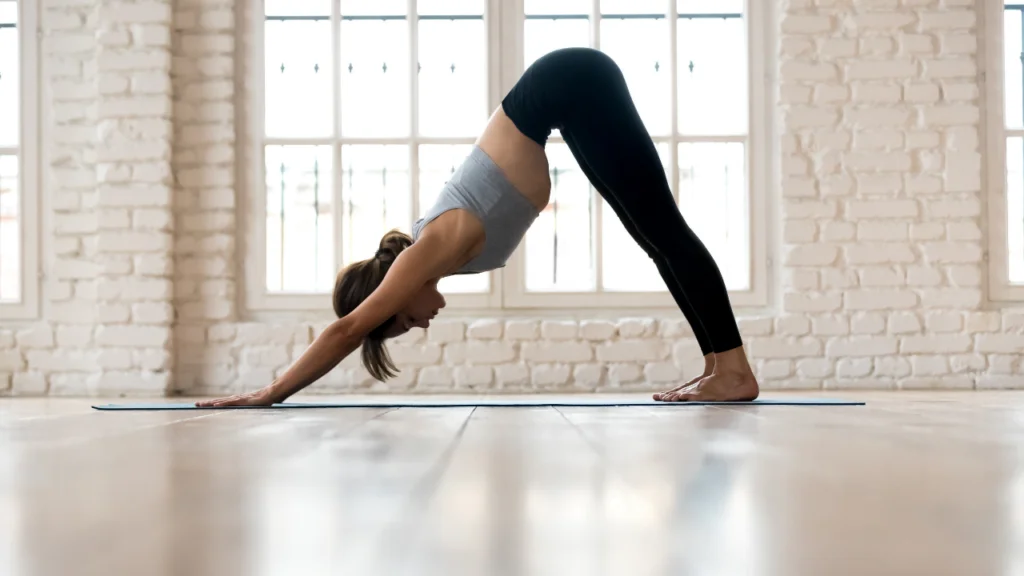
A staple pose of yoga, downward facing dog works your hamstrings, calves, glutes, and shoulders.
From tabletop tuck your toes under and lift your hips up towards the sky, straighten your legs. As you do this extend strongly through y our arms and into the mat with your fingers spread out. You want a flat back through your shoulders and into your hands.
Try to let your heels sit flat on the ground, but dont worry if you cannot just yet.
If you struggle to flatten your back or legs, use a block or step to raise your arms or leg your legs bend slightly.
Hold downward dog for 1 minute.
5. Plank pose
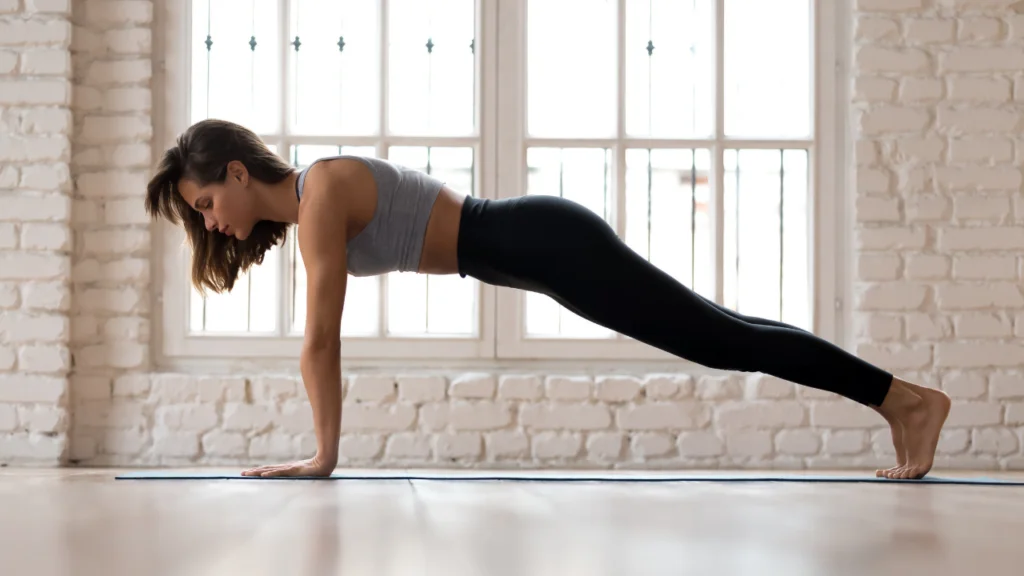
Plank pose works your abs and core and is a great beginner core yoga pose.
Begin in tabletop position, on all fours, hands under shoulders, knees under hips. Reach one leg back and then the other keeping your hands in place. Look straight down towards the floor and hold this pose. You want a straight line from your head right through your body to your toes.
Hold for one minute.
6. Cat cow pose
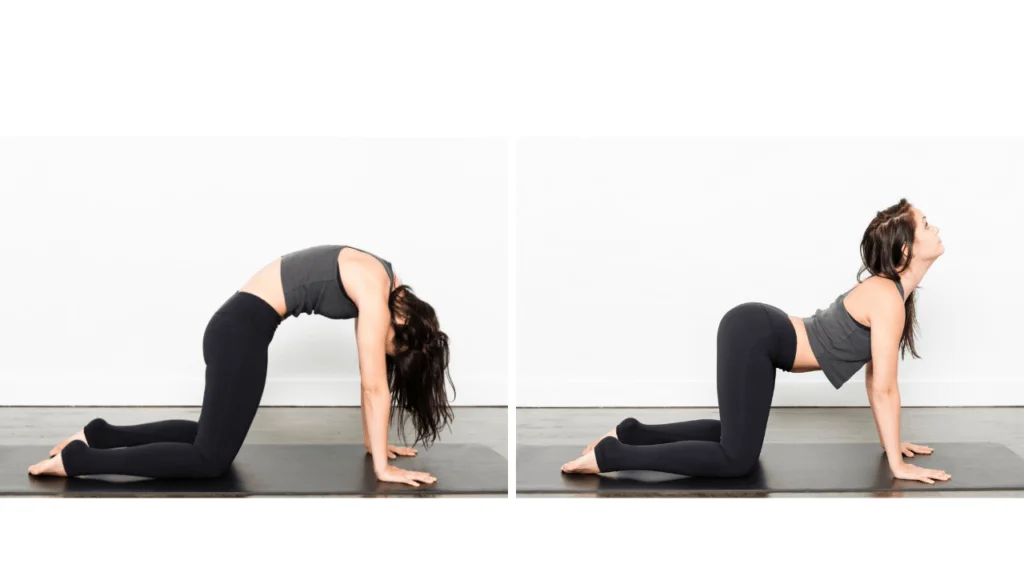
Cat cow pose is a great back stretching pose and is good for spine health.
To start come back to tabletop. Inhale and arch, you back down, belly down, raise your head, and tilt your tail up. As you exhale reverse the move, round your back, tuck your tail bone under and head down.
Hold for one minute.
7. Childs pose
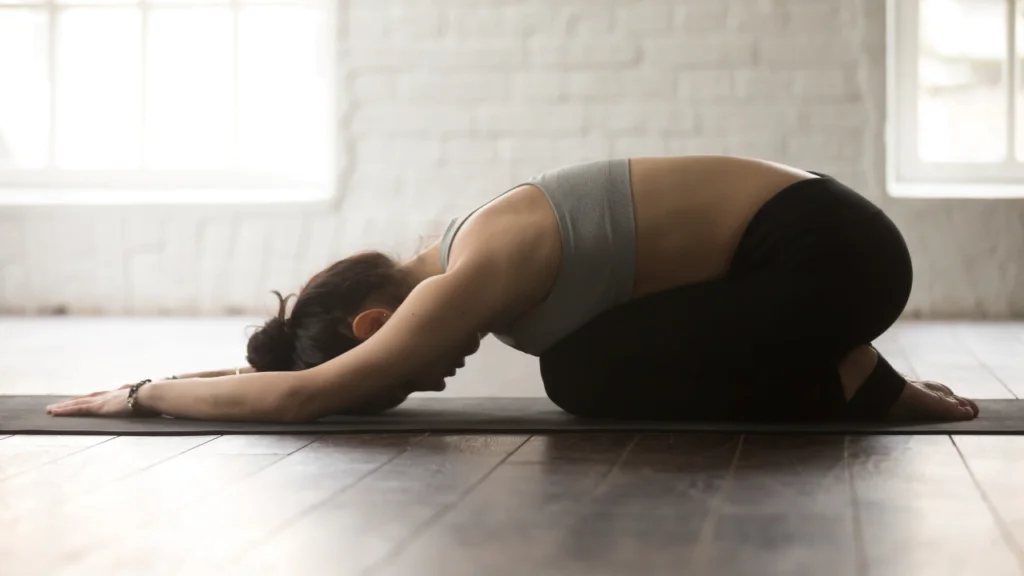
We love child’s pose, it’s an awesome lat and back stretch that’s really gentle.
Kneel on the mat with our knees under your shoulders, tough your toes together and then sit your butt between your legs. Now drop your chest into your thighs, reaching your hands out in front of you in the mat to stretch your back muscle. Rest your head on the floor.
Hold for one minute.
8. Pigeon pose
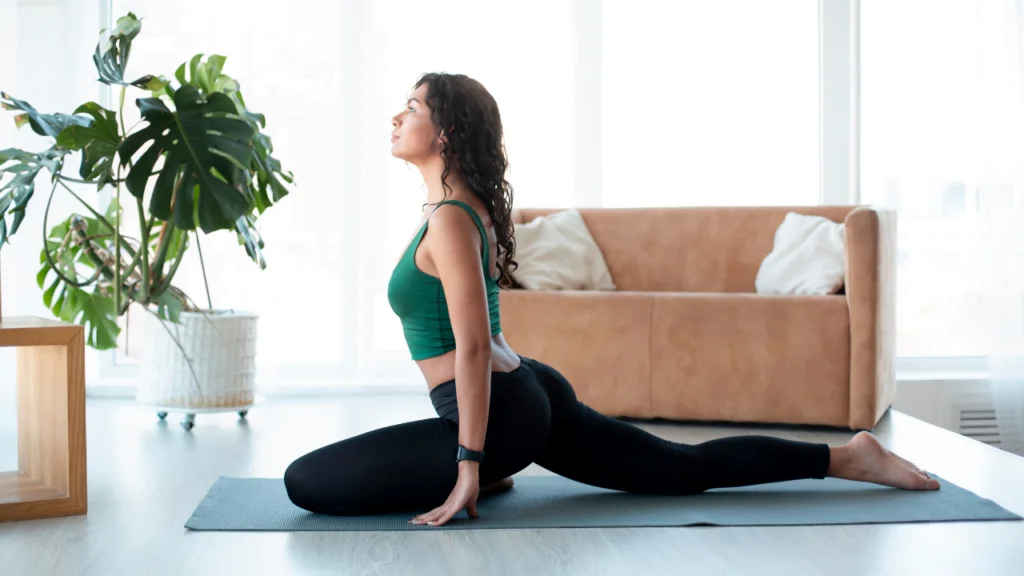
Another one of our favorite poses, this gentle pose stretches your glutes and opens your hips. It’s great if you have a desk job or sit down a lot which is most of us. It’s also a stretch that will help relieve sciatic nerve pain.
To do pigeon pose return to tabletop pose. Take your right knee and position in on the floor between your hands with your right heel just under your hip. Let your hips drop but make sure they remain squat to the floor. Inhale and open your chest. Take your gaze up or forward.
Hold for 1 minute and then repeat on the opposite side.
9. corpse pose
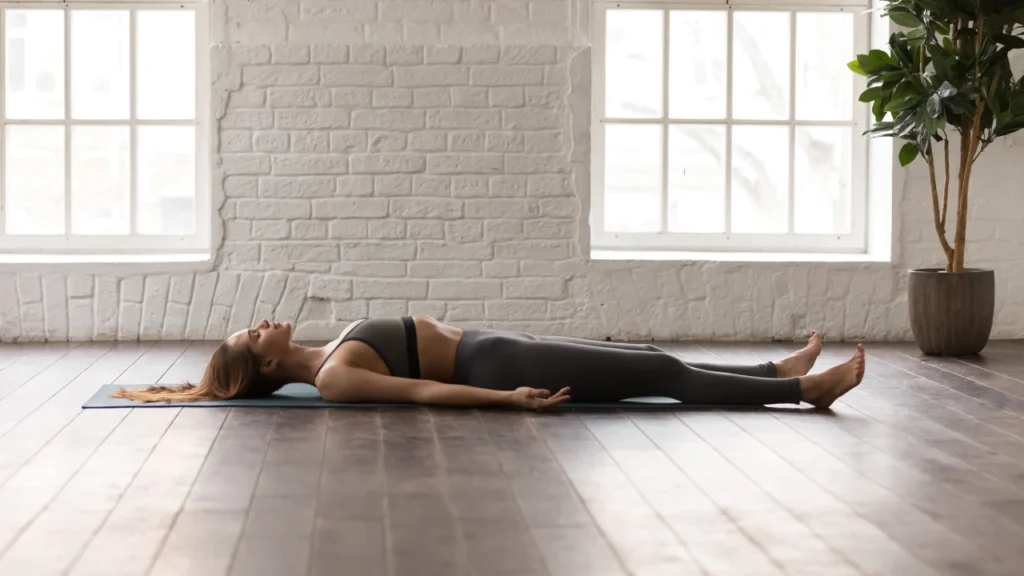
Also known as Savasana, corpse pose is super simple. Lay on our back with your feet slightly apart and hands by your side. Let your whole body relax into the ground. Melt into the ground and relax here for a minute or two or until you feel it’s time to get up.
This yoga for beginners at home workout plan is the perfect way to start enjoying yoga and learning your practice as a beginner yogi.
Do this as part of a weekly yoga routine in the morning or afternoon when time allows it.
You may also like to combine it with our 10-minute morning yoga routine for beginners.
More yoga posts
Unwind with Yoga for Stress Relief – Find Serenity
8 Beginner Yoga Poses For Plus-Sized Women
10 Major Benefits Of Yoga For Men

Welcome! I’m Luke, a certified personal trainer with over 14 years of experience. With a BSc (Hons) in Sports Science, I specialize in tailored fitness programs for diverse clients who want to improve their lifestyle through exercise and healthy eating.

